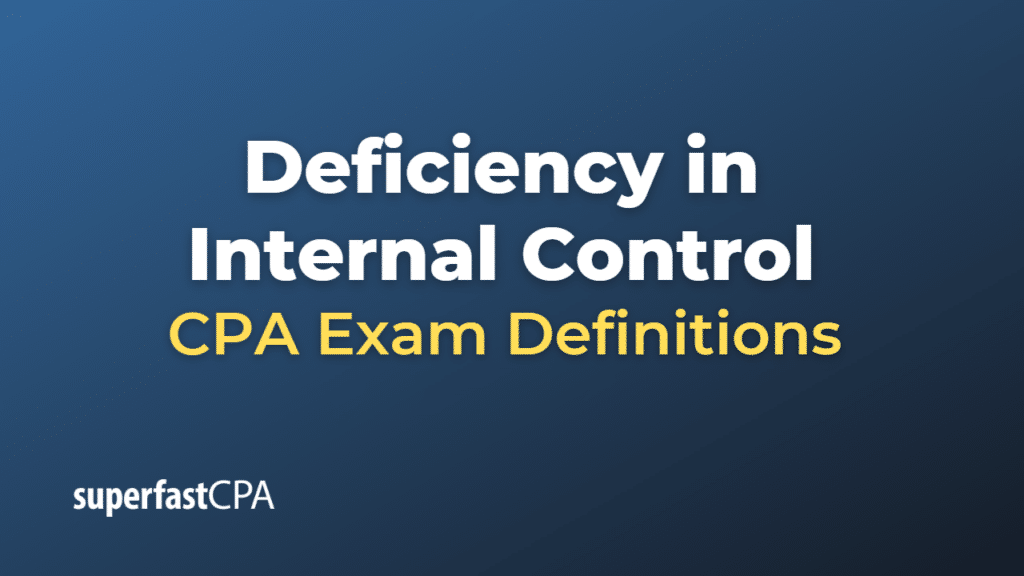Deficiency in Internal Control
A “deficiency in internal control” in an audit refers to a weakness or shortcoming in an organization’s internal control system that may hinder the organization’s ability to achieve its financial reporting objectives, safeguard its assets, and ensure the reliability of financial statements. A deficiency in internal control increases the risk of material misstatements in the financial statements due to fraud or error.
In the context of an audit, deficiencies in internal control can arise from several factors, such as:
- Inadequate design: The internal control system may be poorly designed, making it ineffective in preventing or detecting misstatements. For example, there might be insufficient segregation of duties, unclear reporting lines, or a lack of necessary controls over specific processes.
- Ineffective implementation: Even if controls are well-designed, they may not be effectively implemented. This can occur when employees are not adequately trained, lack understanding of the controls, or do not follow the prescribed policies and procedures.
- Inadequate monitoring: A deficiency in internal control may also result from insufficient monitoring and review of the control environment. This can include a lack of ongoing assessments, infrequent internal audits, or inadequate oversight by management or the board of directors.
- Override of controls: Management or employees might intentionally or unintentionally override established controls, which can lead to a deficiency in internal control and increase the risk of material misstatements in the financial statements.
During an audit, auditors evaluate the organization’s internal control environment, identify deficiencies in internal control, and assess the potential impact of those deficiencies on the financial statements. If deficiencies are identified, auditors communicate their findings to management and those charged with governance, such as the board of directors or the audit committee. Management is then responsible for addressing the deficiencies and improving the internal control system to reduce the risk of material misstatements in the financial statements.













